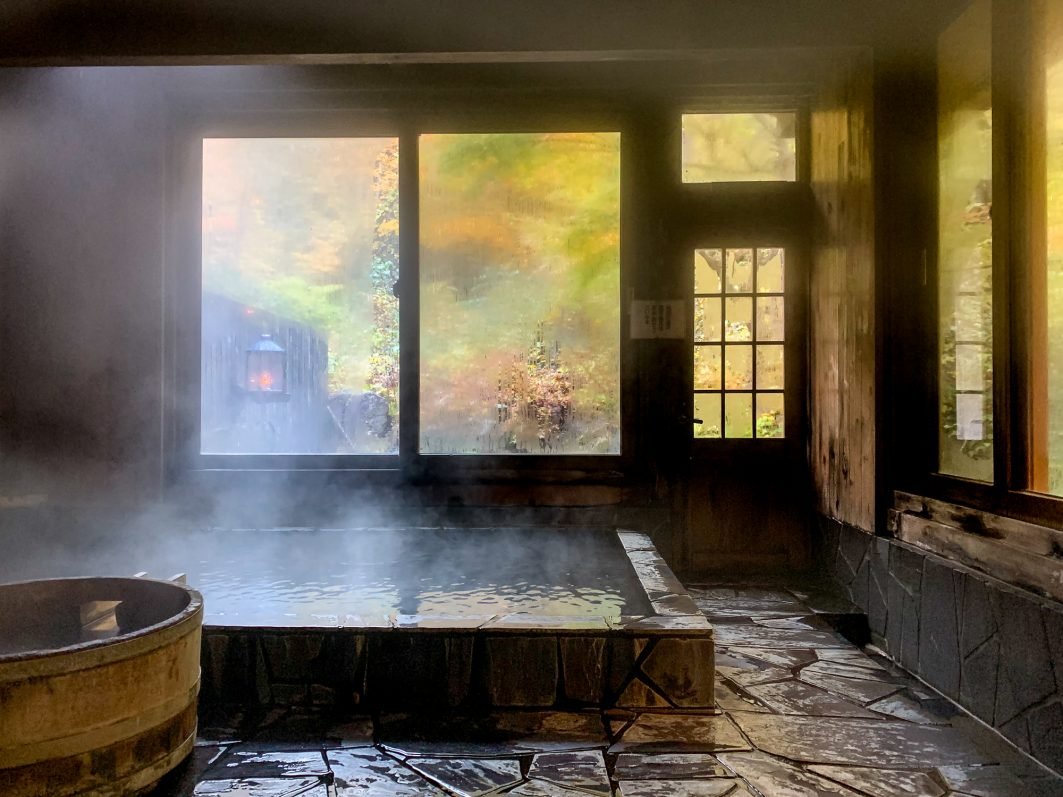
Onsen
Onsen – Japan’s
Sacred Hot Springs
The Onsen is at the heart of Japan’s bathing culture — a place where nature, purity, and quiet ritual meet. Fed by geothermal springs, these natural baths have been used for centuries for their healing minerals and spiritual serenity. The Onsen is not only about cleansing the body; it’s about returning to harmony with nature.
The Spirit of the Springs
Each Onsen is shaped by its environment — mountain, forest, or coast — and the mineral content of its water gives it unique therapeutic properties. Rich in sulfur, magnesium, and calcium, Onsen water is said to ease tension, soothe the skin, and balance the nervous system.
The ritual is simple yet profound: wash before entering, sink slowly into the silence, and let the heat draw you into stillness.
A Ritual of Respect
Onsen bathing is deeply tied to Shinto and Buddhist ideas of purity. Silence and mindfulness are part of the ritual — a reminder that peace comes through simplicity. Traditionally, men and women bathed separately, and conversation is quiet, allowing each person to reconnect with the rhythm of their own breath.
Modern Onsen
Today, the Onsen remains a treasured part of Japanese life — from rustic outdoor baths (rotenburo) to modern wellness resorts. Though design and luxury vary, the essence never changes: a return to balance, to water, and to oneself.
Sento – The Japanese Public Bathhouse
While Onsen are born from nature, Sento represent the communal heart of urban Japan. Developed in cities where natural springs were scarce, Sento are man-made public bathhouses designed to give everyone access to the restorative power of bathing. More than hygiene, they are spaces of equality, connection, and quiet reflection.
The Flow of the Ritual
Visitors begin by washing thoroughly before entering the shared pools. The water is heated — often to around 40–42°C — and sometimes infused with minerals, herbs, or yuzu fruits for seasonal rituals.
Many Sento include a variety of baths — warm, cool, electric, or jet — allowing bathers to move through contrasts that refresh body and mind.
A Cultural Meeting Place
Sento culture is built on community. It’s where generations meet — elders, workers, and families — all equal in the steam. Bathing side by side breaks down social barriers and nurtures a sense of belonging. Art, often depicting Mount Fuji or nature scenes, adorns the walls, connecting even city dwellers to nature.
Sento Today
Modern Sento continue to evolve, combining tradition with contemporary design, soundscapes, and aromatherapy. Yet the soul of the experience remains unchanged: shared warmth, stillness, and the simple act of washing away the day.


